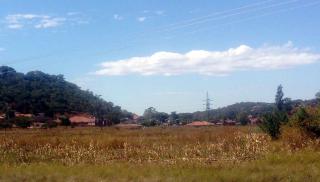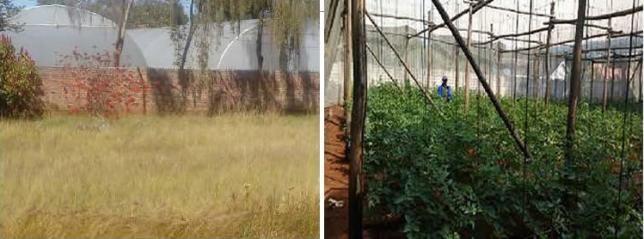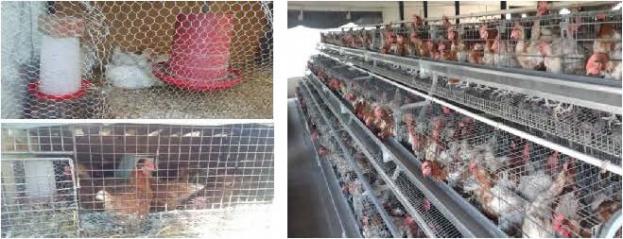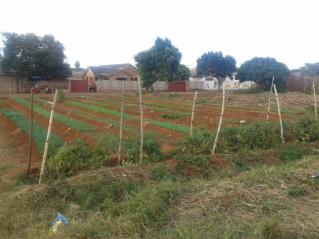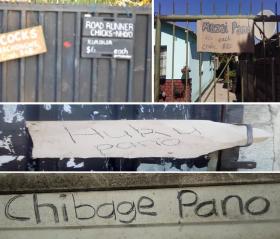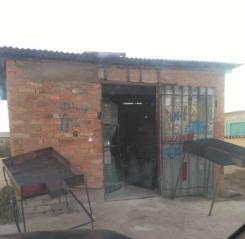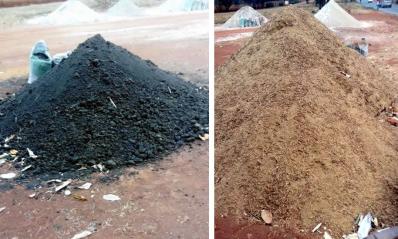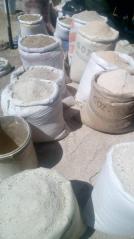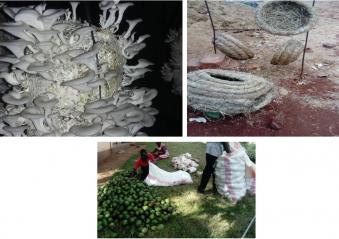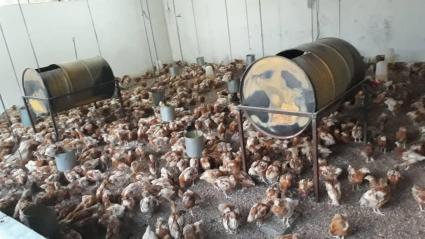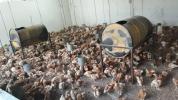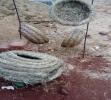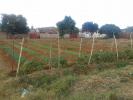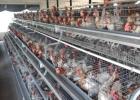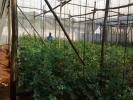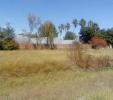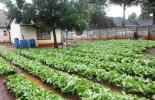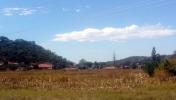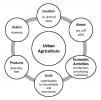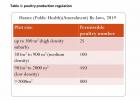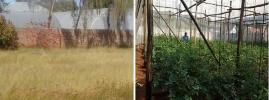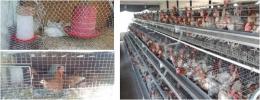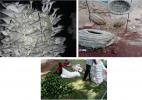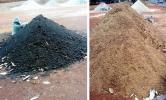Urban agriculture in Zimbabwe has become more than just about personal hobbies and households’ desire to access freshly grown food products. Socio-economic trends in urban areas have made it increasingly important for many urban households to use their backyard and other spaces to produce crops and animals to significantly meet their food requirements as well as sell for incomes. These ‘farmers’ are unique in their resourcefulness in terms of accessing farming inputs, information and markets.
The sector is also prime ground for fashionable food trends and changing wellness demands by urban societies. Farming extension services are usually not as traditionally structured as for rural communities but are influenced by input suppliers, peer knowledge systems and access to information technologies. In this paper we present the role and scope of universities in engaging these unique food producers as well as related stakeholders in urban food production systems.
1. Introduction
Urban Agriculture is the growing, processing, and distribution of food and other products through intensive plant cultivation and animal husbandry in and around cities. This definition by Krishnan et al., (2016) is useful for comprehensive look at urban agriculture in the Zimbabwean context, without restricting the discussion to off-plot growing of maize and a few associated crops by low income groups, as has been the predominant practice by urban agriculture scholars. Implied and related concepts are food security, nutrition, sustainability, environment, beautification, leisure, social interaction.
Urban Agriculture is ‘here to stay’ as will be illustrated by examples in this paper, and also by the fact that it is officially recognised by high level policy and legislative instruments. The Nyanga Declaration, (2002) of the Urban Councils Association of Zimbabwe , and the Harare Declaration on Urban and Peri -Urban Agriculture (2003) by Eastern and Southern African government ministers of local government pledged to support and facilitate urban agriculture, as well as integrating urban and peri-urban agriculture into urban economies. In Zimbabwe, the Urban Councils Act generally covers the prohibition and regulation of ‘..any crop which constitutes a danger to public health, public safety or security as well as is unsightly in the area or locality..’ Several Harare City By-laws such as those on Noise, Protection of marginalised lands, Public health (2019 amendment) and Human excreta and dangerous substances not to be used as fertiliser are also an indication of the importance of urban agriculture issues.
This case study will demonstrate that urban agriculture in Zimbabwe is more complex than meets the eye and will also give examples of pertinent research and innovation issues. The case study uses photo illustrations to make these points.
For a broad perspective on urban agriculture issues, we adapt the framework (Figure 1) of Stewart et al., (2013)
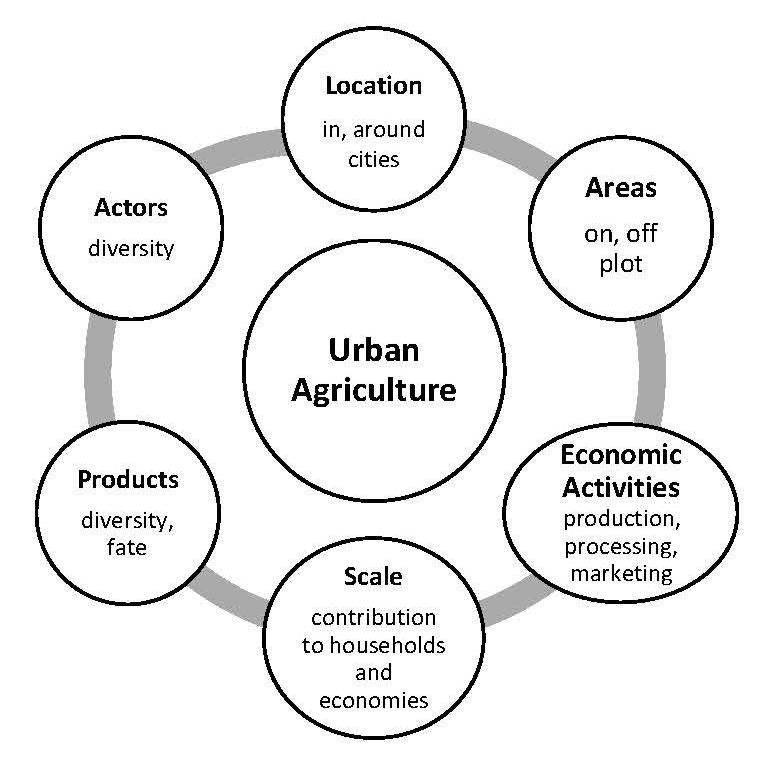
2. Location of urban agriculture
The dimension of location specifies agriculture within the cities or around the cities (peri-urban). This case study only focuses on urban agriculture within the cities.
3. Area
Area specifies where exactly the urban agriculture occurs. Two typologies used are on-plot or off-plot (Mbiba, 1994). Off-plot is generally perceived as public (open) land and, on- plot majority of cases are on residential stands whereby plot owner can be identified in the deeds registry.
City authorities may have limited focus on areas of urban farming as illustrated by news from The Herald of 30 April, 2019 in which a City of Harare Environmental Councillor was quoted as saying among other things that from next season, Harare City Council is to slash crops illegally grown on undesignated farming areas. This is because robbery and other crimes increase around maize along road verges and open spaces. She said that City by-laws do not allow urban farming on side roads, verges, wetlands, along streams or river bank as this leads to siltation of water bodies such as Harare’s Lake Chivero. As such, Harare District offices had been instructed to allocate proper plots with correct sizes (to those wishing to engage in urban agriculture). She also cited seed companies that were advertising their brands through illegally planted crops along the roads. The spokesperson said the City supports urban agriculture only in designated sites because it contributes to the household food sustenance and that that some urban farmers even sell to the Grain Marketing Board. But, she said, ‘urban farming does not mean farming outside your yards’.
Here we note one of many examples in the media where the focus on urban agriculture by city authorities around Zimbabwe is usually off-plot growing of maize, and not what happens on-plot.
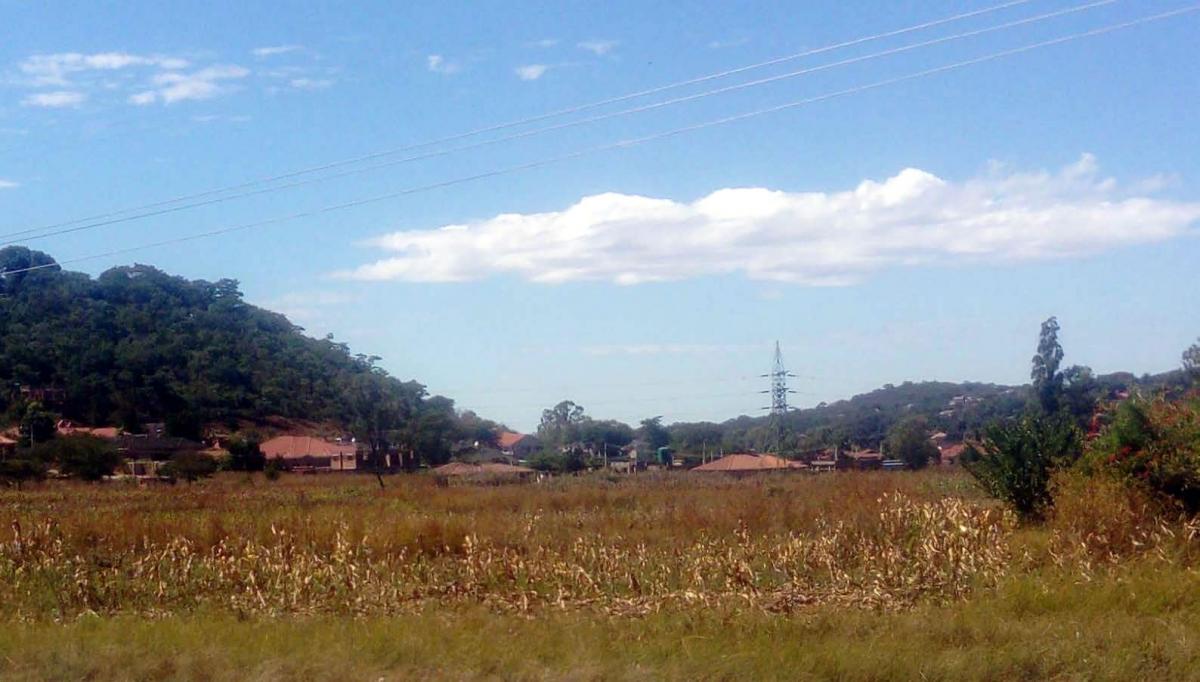
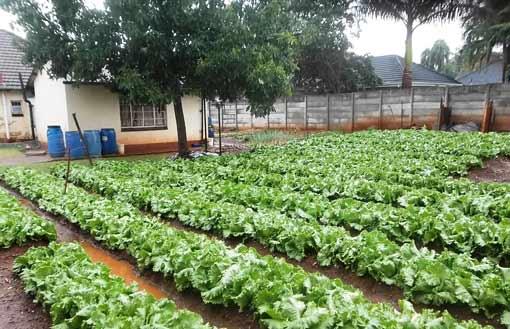
4. Scale
The scale of urban agriculture in Zimbabwe varies from very rudimentary, subsistence levels of production to large scale, highly sophisticated production of various crops or livestock such as poultry, goats or rabbits.
Figure 4: Greenhouse production of horticultural crops in low density residential areas of
Harare
Figure 4 is an example of now very common urban greenhouse farming of mainly horticultural crops such as tomatoes, peppers and cauliflowers. Some greenhouses are makeshift, while others are very finely constructed, also with drip irrigation, mainly using borehole water. This has arisen as many plot owners have decided to make use of their pieces of land to augment their incomes. Such producers usually have some savings to invest or they actually access finance through banks. Unlike traditional rural agriculture, in terms of extension services, these producers mainly rely on after-sale- services from input suppliers, or through commodity networks, or through research on the internet. Challenges sited include pest and disease management and marketing of produce. Some have installed cold storage facilities on their plots so as to manage produce shelf life and marketing.
Figure 5: Different scales of urban poultry production
Poultry production is very popular at commercial and subsistence scales across high, medium and low density residential areas. Poultry houses range from small cages to high-tech battery systems with automated feeders and drinkers.
In both urban horticulture and poultry production, universities have a role in facilitating innovation on product value addition, management of ground water resources, waste management, pollution and pest control.
City by-laws stipulate the numbers of poultry to be kept on any residential plot as shown below.
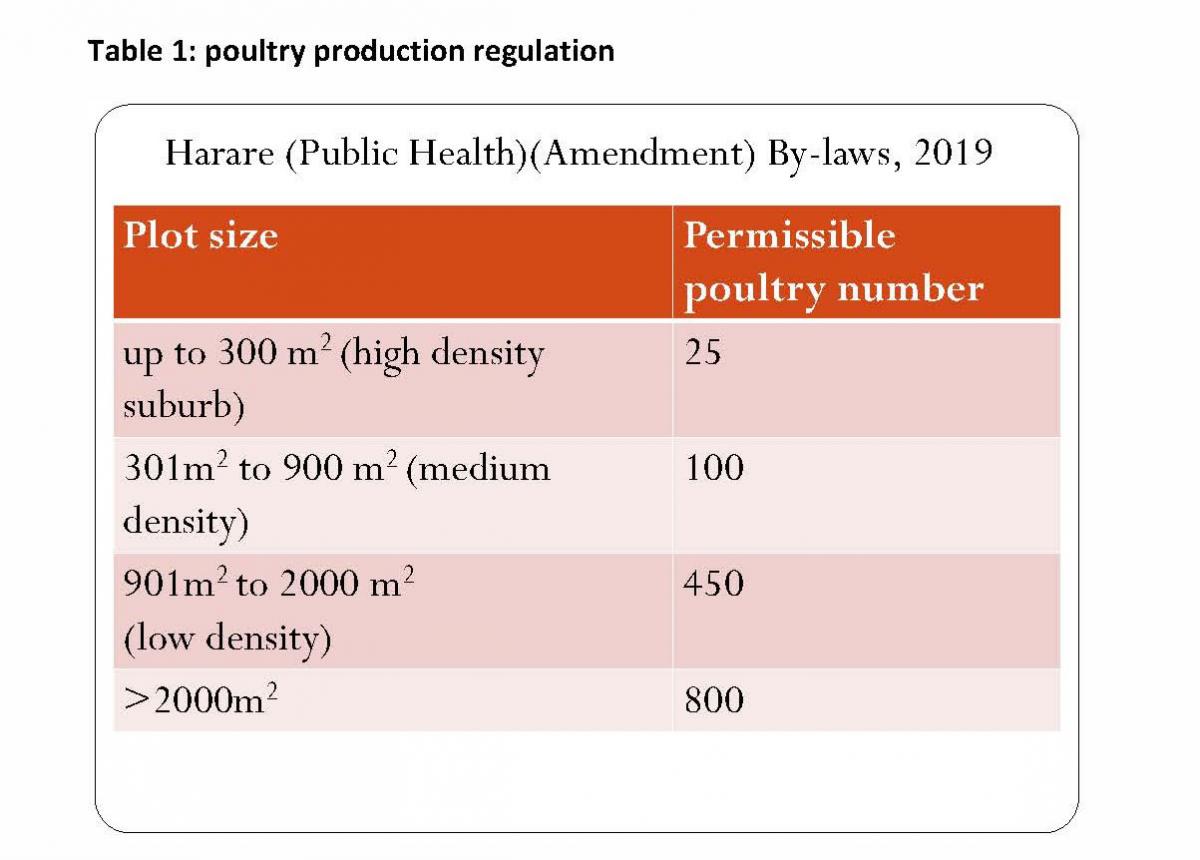
The city attempts to regulate poultry numbers in residential areas but it is possible to have very high levels of production in any neighbourhood as each plot owner may choose to exercise their legal rights. This means that there can be problems with water use, ground water abstraction, pollution, waste management, disease and pest control, zoonotic diseases and even noise and smell pollution. Universities have a role to play in facilitating catchment management in urban neighbourhoods as well as geo-spatial planning of residential plots that takes into account urban agro-ecological systems.
5. Economic activities
Figure 6: Seedling production in a high density residential area
ontrary to the focus of traditional literature, urban farmers are increasingly engaging in various value chains such as breeding, support services and products. Figure 6 shows an off-plot high density residential area production of different vegetable crops seedlings for sale.
Marketing involves different levels of sophistication from supplying supermarkets and hotels to ‘farm-gate’ sale of various quantities of produce. Figure 7 shows various marketing of breeding chickens, eggs, and maize in urban Chinhoyi, Zimbabwe
Figure 7: Various marketed products in Chinhoyi (chibage is maize, huku is chickens and mazai are eggs)
The top left corner image in Figure 7 shows a farmers selling chicks and breeding males of indigenous poultry, which are now highly sought after in urban areas. Also worth noting is reference to specialist poultry breeds such as ‘Kroilers’. Researchers have to innovatively intervene to facilitate appreciation of the dangers of eroding indigenous poultry breeds due to unregulated entry of foreign breeds onto urban ‘farms’.
Along the value chain is also grinding mills (Figure 8) for processing of grain into flour. There is a very high demand of such services across residential areas, regardless of socio-economic levels due to increased food costs, as well as the need for healthier foods and feed for poultry. The processed grain mainly maize, can be on or off plot grown or can be brought in from peri-urban or rural areas. Sorghum, millet and wheat is also brought into urban areas in grain form and processed at these mills. The mills often present problems of noise and dust pollution which should be solved through engineering innovations as well urban planning improvements.
Figure 8: A grain processing mill in a residential area
6. Range of products
The range of urban agriculture products keeps growing in Zimbabwe. Below are some examples
Figure 9: Soil ameliorating products
In Figure 9, on the left is a heap of black top-soil which is commonly sold to urban residents, particularly in low and medium density residential areas for improving ornamental lawns. The problem can be inherent seeds in the soils which may lead to introduction of invasive species such as Desmodium uncinatum, a popular forage legume species brought into urban residential areas through horse and cow manures sold herein. An innovation could be solar heat treatment before selling.
On the right hand side of Figure 9 is tobacco dust from tobacco auction floors which is also a popular lawn fertilizer. A research question is the potential soil and ground water pollution by this very highly chemical potent substrate. Could it also be pre-processed organically to make it environmentally friendlier?
Available in urban areas markets are different types of brans (Figure 10) popularly purchased by urban producers of indigenous poultry as stockfeed. The brans are mixtures of maize, sunflower, millet etc. which the sellers promote as very good feed for the poultry. However, there are no feeding standards specifications, even at very basic levels. Perhaps with the facilitation of universities the sellers and poultry producers associations could develop basic standards specifications for basic feeding values of these brans, as well as anti-nutritional factors such as aflatoxins and rancidity.
Figure 10: Grain brans and sweepings sold at Mbare Musika, Harare
Figure 11: Diverse urban agriculture products
Urban farmers produce and sell other diverse products such as oyster mushrooms, laying and brooding nests for indigenous poultry, as well as a diversity of fruits such as mangoes and avocados (Figure 11).
7. Concerns related to urban agriculture
With increasing levels of urban poultry production, and with many resorting to using water from wells, there is concern of waterborne diseases related to waste management, as well as mismanagement of antibiotics leading to antibiotic residues in poultry meat from backyard producers (Mucheka, 2017), hence potential antimicrobial resistance. Also in horticultural production, there are risks of herbicides and pesticides resistance. Universities have a role in leading one health approaches in urban agriculture e.g., with innovations in agro-ecological planning, management of residual antibiotic and pesticides as well as prevention of zoonotic diseases.
Figure 12: Indoors poultry production
A common practice is the keeping of poultry in people’s garages or even spare rooms within houses. This is due to fears of loses due to thefts, as well as to enable easy watch by the owners and the need to keep the birds warm. In Figure 12, charcoal brooders are used to keep the chicks warm in a garage. All these are practical management issues faced by the urban farmers but can be associated with ammonia build up within the houses as well as carbon monoxide build up. Innovatively, universities could work ok alternate security systems as well as solar related brooders.
Urban farmers are often ahead of universities when introducing new genetic materials and sometimes they do so illicitly. Pertinent issues related to this are possible contamination and erosion of local genetics as well as embracing imported breeds while safeguarding local genetic heritage. There is need for participatory regulatory measures spearheaded by researchers, farmers and regulating authorities.
Recently, Zimbabwe experienced a hyped promotion of quail production because of human nutritional value. Similarly the production of potatoes in sacks was purported to give up to 15 kg yield per plant. Universities could not give the necessary research and technical support because of the scale and speed with which the new products were promoted, often by politicians. Traditional research funding systems whereby researchers need to write proposals for funding and sometimes wait for many months to get positive responses prevented most researchers from immediately responding to quail and sack potato production issues.
8. Conclusion
Urban agriculture is complex, diverse and dynamic and universities must be a good match. There is need for innovative research and extension partnerships to support the urban farmers who are often very private in their operations. There is also need for value addition of urban agriculture products , holistic urban planning partnerships, one health approaches for water, energy and agro-ecological systems, all supported by innovative research funding mechanisms.
References
Krishnan, S., Nandwani, D., Smith, G. and V. Kankarla (2016). Sustainable Urban Agriculture: A Growing Solution to Urban Food Deserts. In: Nandwani, D (Ed). Organic Farming for Sustainable Agriculture. Sustainable Development and Biodiversity 9. Springer. 10.1007/978-3-319-26803-3_15.
Mbiba, B. (1994). Institutional responses to uncontrolled urban cultivation in Harare: prohibitive or accommodative? Environment and Urbanization, 6(1), 188–202. https://doi.org/10.1177/095624789400600116
Mucheka K. 2017. Factors influencing antibiotic residue detection in broiler chickens sold in Harare. Bachelors of Science Honours Dissertation, Department of Animal Science University of Zimbabwe
Nyanga Declaration on Urban and Peri-urban Agriculture in Zimbabwe (2002). Published by City farmer, Canada’s office of urban agriculture (cityfarm@interchange.ubc.ca)
Stewart, R., Korth, M., Langer, L., Rafferty, S., Da Silva, N. R., and C. van Rooyen. (2013). What are the impacts of urban agriculture programs on food security in low and middle-income countries?. Environmental Evidence:2:7

